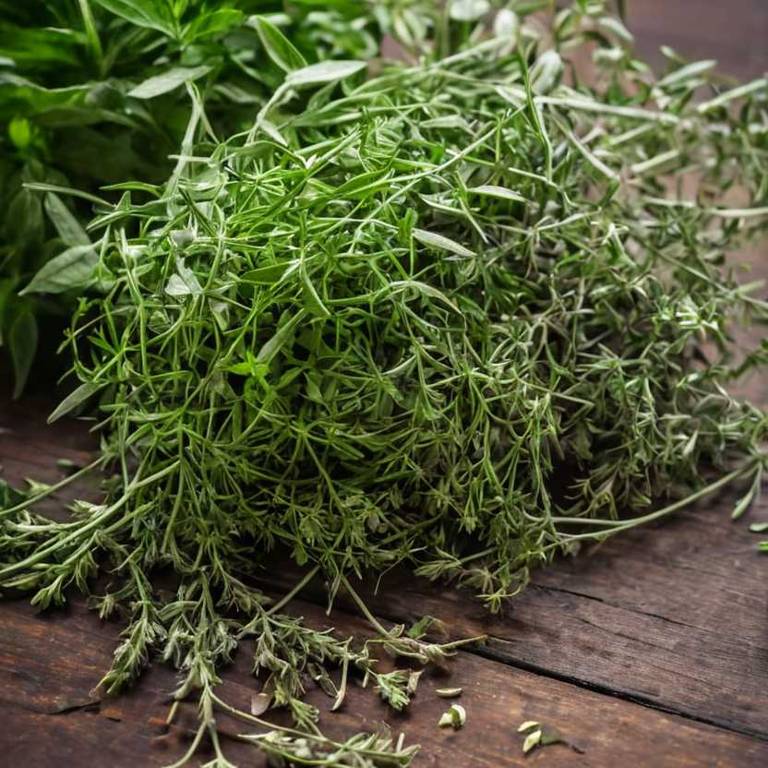By Leen Randell
Updated: Jul 06, 2024
What to know about Canarium strictum (galip nut) before using it medicinally

Canarium strictum, commonly known as galip nut, is a herb that has been prized for its medicinal properties, which are said to boost the immune system, reduce inflammation, and alleviate digestive issues.
From a horticultural perspective, Canarium strictum is a medium-sized evergreen tree that is native to the tropical regions of the Pacific and Indian Oceans, requiring well-drained soil and a warm, humid climate to thrive. Botanically, this herb belongs to the family Burseraceae and is characterized by its dark brown, glossy leaves and clusters of small, fragrant flowers.
Historically, Canarium strictum has been referenced in ancient cultures, including traditional medicine in India and Southeast Asia, where it is still valued for its medicinal and culinary uses.
This article explains the medicinal, horticultural, botanical, and historical aspects of Canarium strictum.
What are the medicinal properties of Canarium strictum?
Canarium strictum helps with treating various ailments including fever, rheumatism, and skin conditions. It is also used as an antiseptic and anti-inflammatory agent. The plant has been traditionally used for its medicinal properties in various parts of the world.
The medicinal properties of Canarium strictum are attributed to its active constituents, including triglycerides, essential oils, and flavonoids. These compounds are responsible for its antiseptic, anti-inflammatory, and antioxidant properties, which contribute to its therapeutic effects.
The parts of the plant most used for medicinal purposes are the kernels, leaves, and bark. The kernels are rich in triglycerides and essential oils, which are extracted and used to treat various health conditions. The leaves and bark are used to make teas and infusions that are used to treat fever and rheumatism.
Improper use of Canarium strictum can cause side effects such as allergic reactions, skin irritation, and digestive problems. Long-term use can also lead to kidney damage and interact with certain medications, including blood thinners and diabetes medications.
Precautions when using Canarium strictum medicinally include consulting with a healthcare professional, especially for pregnant or breastfeeding women. Additionally, users should be aware of the proper dosages and preparation methods to avoid side effects.
What are the horticulural aspects of Canarium strictum?
Canarium strictum grow in well-drained acidic soils at high altitudes. Optimal growth occurs between 1000 to 2000 meters above sea level, with average temperatures ranging from 18 to 30°C. It requires high humidity and partial shade.
For planting, choose a spot with minimal wind and frost, as galip nut is sensitive to wind and cold temperatures. Dig holes 1-2 meters deep and 1-2 meters wide, and mix in 2-3 times the volume of compost. Plant seeds or seedlings 1-2 meters apart, and water regularly.
Galip nuts are ready for harvesting when the outer shell cracks open, and the inner kernel is light brown. Harvest nuts between 3-5 months after flowering, when the nuts are still moist. Harvest regularly to prevent spoilage and encourage further fruiting.
Pests and diseases affecting galip nut include the Asian longhorned beetle, which can girdle trees, and the fungus Diplodia corticola, which causes root rot. Other diseases include bacterial leaf spot and powdery mildew, which can be managed through integrated pest management strategies.
What are the botanical aspects of Canarium strictum?
Canarium strictum is a tropical tree species with a straight or slightly curved trunk, grayish-brown bark, and a dense, rounded crown. The leaves are alternate, simple, elliptical to ovate, 15-30 cm long, and 5-10 cm wide, with a pointed apex and a leathery texture.
Canarium strictum is classified in the family Sapindaceae, order Sapindales, and kingdom Plantae. It belongs to the genus Canarium, which comprises around 30 species of trees and shrubs. The species is further divided into three subspecies, with C. s. strictum being the most widely distributed.
The variants of Canarium strictum include C. s. strictum, C. s. glabrum, and C. s. virgatum. The former is the most common, found in the Pacific Islands, while the latter two are found in Southeast Asia and the Indian Ocean, respectively. The variants differ in their leaf shape, size, and density.
Canarium strictum is widely distributed in the tropics, with a range spanning from Madagascar to the Pacific Islands, including Hawaii, Samoa, and the Marshall Islands. It is also found in Southeast Asia, from Indonesia to the Philippines, and in the Indian Ocean, including the Seychelles and Mauritius.
The life cycle of Canarium strictum consists of three stages: germination, growth, and reproduction. The seed germinates in 1-2 weeks, followed by a period of rapid growth, reaching maturity in 10-15 years. The tree produces flowers, fruits, and seeds, with a single tree producing 100-200 fruits per year.
What are the historical aspects of Canarium strictum?
Canarium strictum is a plant with a rich history of use in traditional medicine. In ancient times, it was used to treat various ailments, including fever, rheumatism, and skin conditions. Its resin was also used to treat wounds and injuries.
In Polynesian mythology, the galip nut is associated with the creation story of the Pacific Islands. According to legend, the god Tangaroa created the world and its inhabitants using the wood of the galip nut tree. This mythological connection emphasizes the tree's sacred and cultural significance.
In various cultures, the galip nut has symbolic meanings that transcend its practical uses. For example, in Hawaiian culture, the tree is a symbol of fertility and prosperity, while in other Pacific Island cultures, it represents strength and resilience.
Historical texts from the Pacific Islands, such as the Hawaiian "Kumulipo," a creation chant, and the "Rarotongan Dictionary," a linguistic and cultural reference, provide evidence of the galip nut's importance in traditional culture. These texts highlight its role in mythology, medicine, and everyday life.
Archaeological findings, such as wooden carvings and tools from ancient settlements, demonstrate the galip nut's practical uses in the past. Carved wooden figurines, like the "Tangaroa figurine," found in the Pacific Islands, also illustrate the tree's cultural significance.